3D Printed Fashion by Iris Van Herpen
Iris van Herpen stands for a reciprocity between craftsmanship and innovation in technique and materials. She creates a modern view on Haute Couture that combines fine handwork techniques with digital technology.
Iris van Herpen stands for a reciprocity between craftsmanship and innovation in technique and materials. She creates a modern view on Haute Couture that combines fine handwork techniques with digital technology. Van Herpen forces fashion to the extreme contradiction between beauty and regeneration. It is her unique way to reevaluate reality and so to express and underline individuality. The essence of van Herpen is expressing the character and emotions of a woman and to extend the shape of the feminine body in detail. She mixes craftsmanship- using old and forgotten techniques- with innovation and materials inspired on the world to come.
Feeling Digital
Recently 3D printed fashion has received a lot of attention, but Iris Van Herpen’s dresses are exceptionally compelling in comparison. Unlike many other 3D printed dresses which ‘feel digital’, her work is very organic in nature and form. These dresses don’t look or feel like they were 3D printed. Van Harpen’s work is extremely curvaceous containing organic forms that you might otherwise think were impossible for a 3D printer to achieve. Using this technology, she is able to take shapes and textures that we recognize, such as shells or insects, and translate them into something that is almost unearthly. It goes beyond the recognized forms that we now associate with fabricated fashion, into something very different. Her work transcends the 3D printing technology used to produce it, in that you're not exactly sure what they are made of.
“I think the challenge is, if you're going to work with a 3-d printer, then don't let everyone know it is 3-d printed. That can be the underlying technology, but it doesn't have to be obvious.”
- Asta Roseway
New collaborative ground
Work like this opens the door to new explorations and techniques being developed. There has always been traditional craft that has been taught, and those skills will ever go away, but what this does is create a space for both the engineer and the artist to work together and to figure out what this new frontier is. These hybrid technology pieces, like the work of Van Herpen, represent a new interdisciplinary collaborative ground where we collectively work together to solve a problem, as opposed to resorting to our isolated practices. The craft will evolve with it and there will be new techniques which will emerge around this new material; there will be new techniques with how to generate 3D printed form that fits well onto bodies. It is just at the beginning.
Pushing boundaries
This is going to enable fashion designers to really push boundaries. There have always been limitations in fashion based on the components and materials used. With 3D printing they go far beyond where they thought they could with conventional structures and materials. This allows designers to get very creative and to transcend their normal tier. We all want to feel like technology is enabling us to dream bigger, to go farther, and even be bolder.
Bold Visions
Once Bill Gates dreamt of a PC in every home. At the time this seemed outlandish, but now it’s not improbable to imagine a 3D printer in every home. Then, we can begin to see more scenarios where downloading and printing the latest in fashion and accessories is second nature. In fact they're already making sneakers on 3D printers – this is in large part due to the printing materials becoming more flexible. There are all sorts of new materials being developed for this technology, and work from designers like Van Herpen help usher this to market by providing vision and aspiration.
Further Reading
Website of Iris van Herpen - http://www.irisvanherpen.com/
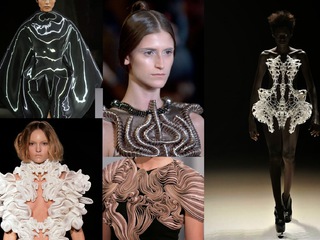
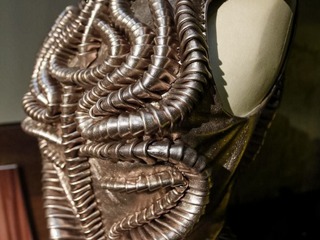
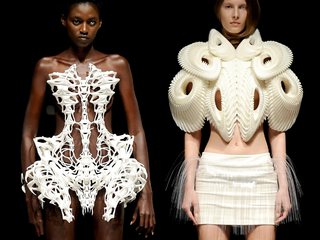
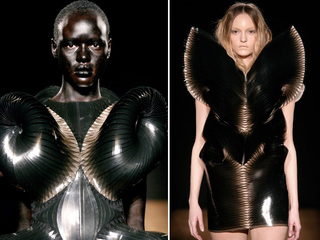
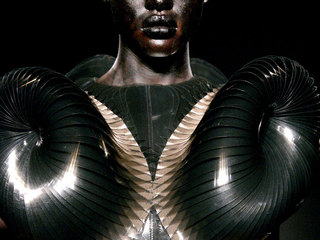
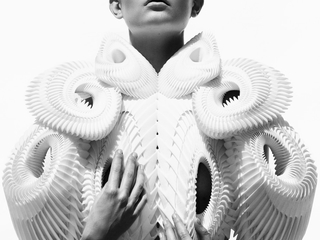
← Back to work
0 Comments